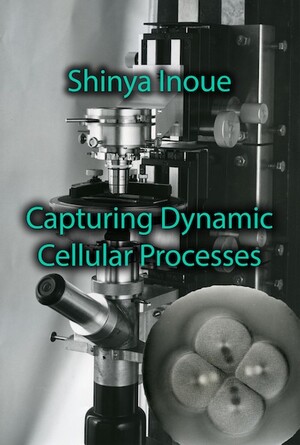It was in 1941 at Musashi that Inoué first encountered Katsuma Dan, who introduced his research on cell division into the zoology classes he taught. Dan described experiments that he and his colleagues had conducted on dividing sea urchin eggs. In the earliest stages of development, the egg divides into smaller cells, without an overall increase in size, a process called cleavage, or segmentation. In the work Dan described, he and his collaborators had sprinkled kaolin, also known as china clay, particles on the surfaces of the dividing eggs. They tracked them using a camera lucida, a device scientists can use to view an image that is projected into a prism mounted onto a microscope. The kaolin particles close to the cleavage furrow, the point where the cell divides, initially moved closer to each other and then quickly moved apart as the furrow cleaved the cell more. The particles further away from the cleavage furrow moved away from each other at all times. Dan believed that this evidence supported his model of cell division where the elongating mitotic spindle pushed two rigid asters apart. Shinya later recalled: “Here at last we were exposed to science in the making!” (16). Inoué, along with several other students, had travelled to the Misaki Marine Biological Station on Moroiso Bay earlier in 1941. There he learned to how to collect plankton, and worked with tunicates and sea urchins. In 1942, Inoué enrolled in the Zoology Department at Tokyo Imperial University, known as Toh-Dai. There, he learned how to use different concentrations of alcohol to dehydrate embryos, to then immerse them in paraffin, and then pour the results into small paper containers to form tissue blocks embedded in paraffin. He was then able to slice extremely thin sections using a microtome. For traditional microscopy, these techniques are ways to produce fixed samples, which can then be stained. Shinya now possessed these hard-won skills, but his work with Katsuma Dan and the need to visualize dynamic processes would lead him to develop new ways of viewing the insides of live cells. Note: the Misaki lab is the one for which Katsuma Dan wrote, “the last one to go”.
- Shinya Inoué, Pathways of a Cell Biologist. Through Yet Another Eye. Springer: 2016
- Shinya Inoué, Collected Works Of Shinya Inoué: Microscopes, Living Cells, and Dynamic Molecules (With DVD-ROM). World Scientific Publishing Company; Har/Dvdr edition (July 18, 2008).

